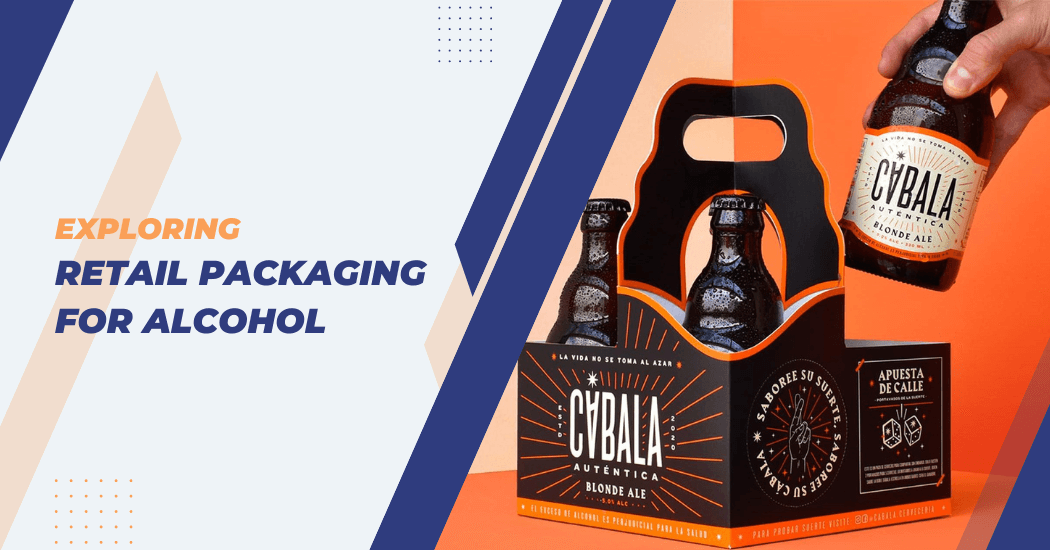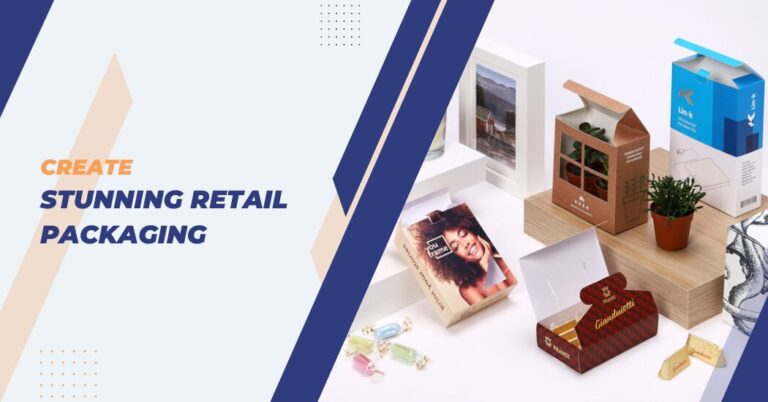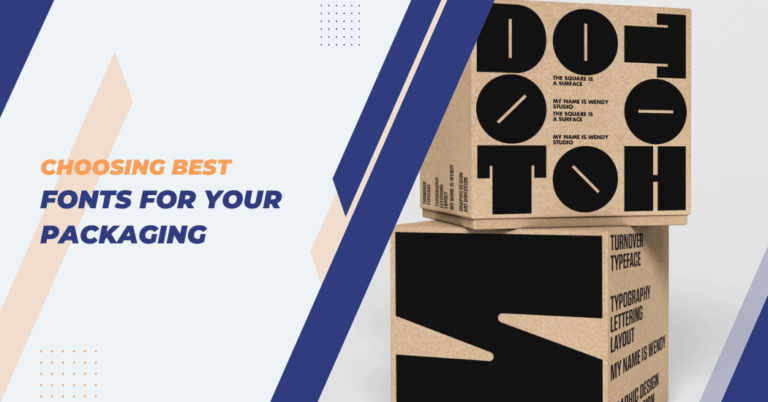What is retail packaging for alcohol?
Retail packaging for alcohol is an often overlooked aspect of the liquor industry. While many people may not think twice about the bottle their favorite vodka or whiskey comes in, retail packaging plays a crucial role in the success and branding of different alcohol products. But what exactly is retail packaging for alcohol?
In this blog post, we will dive deep into retail packaging for alcohol and explore its significance, trends and impact on consumer behavior.
So grab your favorite drink (alcoholic or non-alcoholic) and join me on this informative journey!
Retail Packaging For Alcohol
Retail packaging for alcohol is the physical container or cover that holds and protects the alcoholic product. It includes all elements of the packaging, such as the bottle, label, cap or cork closure and any additional design elements.
Retail packaging for alcohol is an important aspect of the liquor industry as it not only serves as a protective barrier but also plays a vital role in catching consumers’ attention and influencing their purchasing decisions.
Importance of retail packaging in the alcohol industry
In today’s competitive market, any brand must stand out and differentiate itself from its competitors. This is where retail packaging plays a significant role. The aesthetics of the packaging can create a lasting impression on consumers and affect their perception of the product.
Additionally, attractive retail packaging can also increase the perceived value of the product, making it seem more luxurious or high-end.
Components of retail packaging for alcohol
Retail packaging for alcohol contains several essential components:
- Bottle or container: This is the primary component that holds the alcoholic beverage. It can be made of various materials such as glass, plastic or metal, depending on the type of alcohol and the brand’s preference. The shape, size and color of the bottle can significantly impact the consumer’s perception.
- Label: The label provides necessary information about the product, such as the brand name, alcohol content and any other legal requirements. The design and typography of the label are vital elements in branding and marketing.
- Closure: Closures like caps or corks are used to seal the container. These can be made from different materials and may also carry the brand’s logo or other design elements.
- Additional design elements: These might include embossing, debossing, foil stamping or other decorative elements on the bottle or label. They add an extra layer of visual appeal and can elevate the perceived value of the product.
- Outer packaging: This refers to any additional packaging used, especially for gift sets or premium products. It could include a box, retail bag or wrapping and often enhances the presentation of the product.
Current trends in retail packaging for alcohol
Like with any industry, trends in retail packaging for alcohol come and go. However, a few current trends stand out:
- Minimalist designs: Many brands are opting for simple, clean designs that emphasize the quality of their product rather than flashy or complex packaging.
- Sustainable packaging: As consumers become more environmentally conscious, there is a growing demand for eco-friendly packaging. Many brands are now using recycled or biodegradable materials in their retail packaging.
- Unique shapes and sizes: Brands are experimenting with distinct bottle shapes and sizes to stand out on shelves and catch consumers’ attention.
- Personalization: With advancements in technology, brands can now offer personalized retail packaging, such as labels with the consumer’s name or customized designs.
Factors to consider for effective alcohol packaging in retail
When creating effective retail packaging for alcohol, several factors need to be considered:
- Consumer preferences: Understanding your target audience’s preferences is crucial. This includes knowing their tastes, lifestyles and values. A packaging design that resonates with your target audience can significantly influence their purchasing decisions.
- Brand identity: The packaging should reflect the brand’s identity and values. It should be consistent with other branding elements to ensure a cohesive brand image.
- Practicality: While aesthetics are essential, the practicality of the packaging should not be overlooked. It should be easy to open, handle and store. Additionally, the packaging should adequately protect the product to prevent leakage or damage.
- Sustainability: As environmental concerns rise, incorporating eco-friendly elements into your packaging can be a significant selling point. This could mean using recyclable materials or designing packaging that can be repurposed.
- Legal requirements: Alcohol packaging must comply with all relevant legal regulations. This includes accurately displaying information like alcohol content, allergen information and health warnings.
- Innovation: Unique and innovative packaging can help your product stand out in a saturated market. This could involve unique shapes, textures or interactive elements.
Remember, effective packaging is not just about looking good it’s about creating a comprehensive experience for consumers that begins the moment they see your product on the shelf.
Sustainability and environmental impact on alcohol retail packaging
In recent years, sustainability and environmental impact have taken center stage in all aspects of business including alcohol retail packaging. Consumers are more conscious than ever about their purchasing decisions, favoring products that align with their values, particularly concerning environmental sustainability.
For the alcohol industry, this trend has led to a significant shift in packaging strategies. Many companies now prioritize the use of eco-friendly materials such as recycled glass or biodegradable plastics, for their bottles and containers.
Furthermore, minimalistic packaging designs are gaining popularity, not only for their aesthetic appeal but also for their reduced environmental impact.
Similarly, brands are increasingly focusing on the lifecycle of their packaging, rethinking their designs to encourage reusability and minimize waste. For instance, some companies now offer refillable bottles or create packaging that can be repurposed in creative ways.
However, the move towards sustainability in alcohol retail packaging is not without its challenges. Companies must balance the need for environmentally friendly materials with the practical requirements of durability, cost-effectiveness and maintaining the product’s quality.
FAQs | Retail Packaging for Alcohol
What are the common types of retail packaging for alcoholic beverages?
Common types include glass bottles, aluminum cans and cardboard boxes. Each type is chosen based on the type of alcohol, brand image and customer preferences.
Why is retail packaging important for alcoholic products?
Retail packaging plays a crucial role in attracting customers, communicating brand identity and protecting the integrity of the alcohol. It also complies with legal requirements and provides information about the product.
How does the design of retail packaging impact consumer choices?
Packaging design influences consumer perceptions, brand recognition and purchasing decisions. A visually appealing and well-designed package can set a product apart on the shelf and attract potential buyers.
Are there specific regulations for the retail packaging of alcoholic beverages?
Yes, there are regulations regarding labeling, alcohol content and health warnings that vary by region. Compliance with these regulations is essential for legal distribution and sale.
Can retail packaging be customized for specific events or promotions?
Yes, many alcohol brands create limited edition or special packaging for events, holidays or promotional purposes. This strategy can enhance brand visibility and stimulate sales.
Wrap Up
Retail packaging plays a crucial role in the success of any product, including alcohol. It not only protects the product but also communicates important information to consumers and influences their purchasing decisions.
When it comes to alcohol retail packaging, there are several factors that brands must consider to ensure its effectiveness. These include understanding the target audience, maintaining brand identity, practicality, sustainability, legal requirements and incorporating innovation.
In recent years, sustainability has become a significant focus in the alcohol industry’s packaging strategies.
Brands are now prioritizing eco-friendly materials and designing packaging with the entire lifecycle in mind. This not only reduces the industry’s environmental impact but also resonates with consumers who prioritize sustainability.






